Strengthening preparedness at Yemen’s points of entry
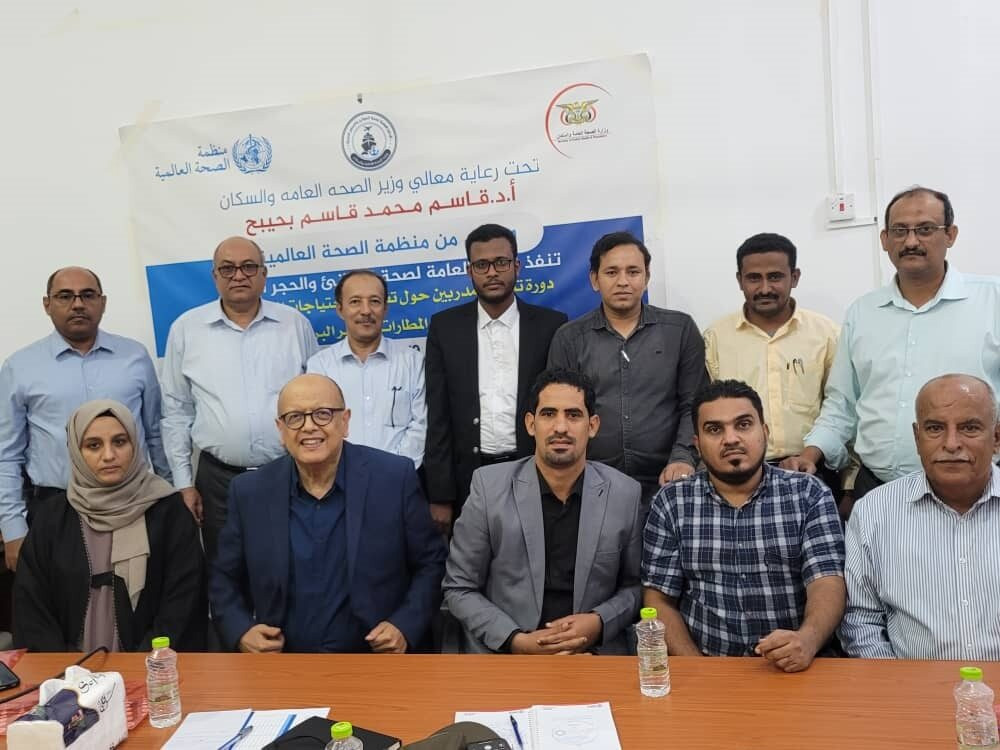 Participants of the point of entry training of trainers workshop in Aden, Yemen. Photo credit: WHO/WHO Yemen21 April 2024 – Yemen faces complex challenges made worse by 10 years of conflict. The deteriorating situation is coupled with a fragile health system, a lack of specialized staff, and a rise in health emergencies, some of which emerge from unexpected sources. Transport, travel and trade are linked to economic development but can also pose public health risks, causing diseases to spread across borders.
Participants of the point of entry training of trainers workshop in Aden, Yemen. Photo credit: WHO/WHO Yemen21 April 2024 – Yemen faces complex challenges made worse by 10 years of conflict. The deteriorating situation is coupled with a fragile health system, a lack of specialized staff, and a rise in health emergencies, some of which emerge from unexpected sources. Transport, travel and trade are linked to economic development but can also pose public health risks, causing diseases to spread across borders.
Points of entry ¬– airports, seaports, ground crossings ¬– pose unique health risks that require specialized capacities distinct from those needed in community and health facility settings. WHO works to enforce the International Health Regulations (IHR) at points of entry and build Yemen’s capacity to prepare for and respond to public health threats from unexpected sources.
Building capacities and pinpointing gaps
In December 2023, the WHO Country Office in Yemen gave a training of trainers workshop on IHR and its core capacities requirements for 14 key personnel from various sectors. These included points of entry staff; health inspectors from multiple airports, seaports and ground crossings; and personnel from national public health authorities.
The training enables participants to conduct national point of entry assessments effectively. The programme used a blended learning approach, combining theoretical sessions with practical field visits, letting participants gain valuable hands-on experience. Moreover, the training ended with a practical tabletop exercise designed to assess and reinforce essential public health functions at points of entry that align with IHR core capacities for prevention, early detection and response.
Standard operating procedures were devised to support the execution of routine activities and the response to international public health emergencies in line with IHR. A national training curriculum, stakeholder analysis, and guidelines on the purpose of IHR for workers at points of entry have also been developed.
 Point of entry assessment and visit to Seiyun Airport, Yemen. Photo credit: WHO, Yemen.The trained team, assisted by national and international experts, conducted national assessments at 10 strategic points of entry: 4 seaports, 3 airports and 3 ground crossings. The findings highlight strong multisectoral commitment and collaboration to fortify health infrastructure and capabilities. Yet they also reveal notable capacity gaps at points of entry premises and in information sharing across various levels.
Point of entry assessment and visit to Seiyun Airport, Yemen. Photo credit: WHO, Yemen.The trained team, assisted by national and international experts, conducted national assessments at 10 strategic points of entry: 4 seaports, 3 airports and 3 ground crossings. The findings highlight strong multisectoral commitment and collaboration to fortify health infrastructure and capabilities. Yet they also reveal notable capacity gaps at points of entry premises and in information sharing across various levels.
The assessments set the baseline for a comprehensive capacity-building plan based on immediate and long-term strategies. Pandemic Fund support will be used to address urgent needs, focusing on prioritized capacities in Yemen. It is vital, however, to sustain financial support and continuous capacity-building to maintain preparedness and response capabilities for public health threats at points of entry.
All hands on deck
Use of the capacity-building plan and the multisectoral assessments brings together stakeholders from human health, animal health, border control and other pivotal sectors. The aim is both to create a holistic understanding of capacities across various sectors, and to align strategies. This fosters a united front to effectively implement and sustain enhanced points of entry capacities that will ensure coordinated and comprehensive preparedness and response to public health threats.
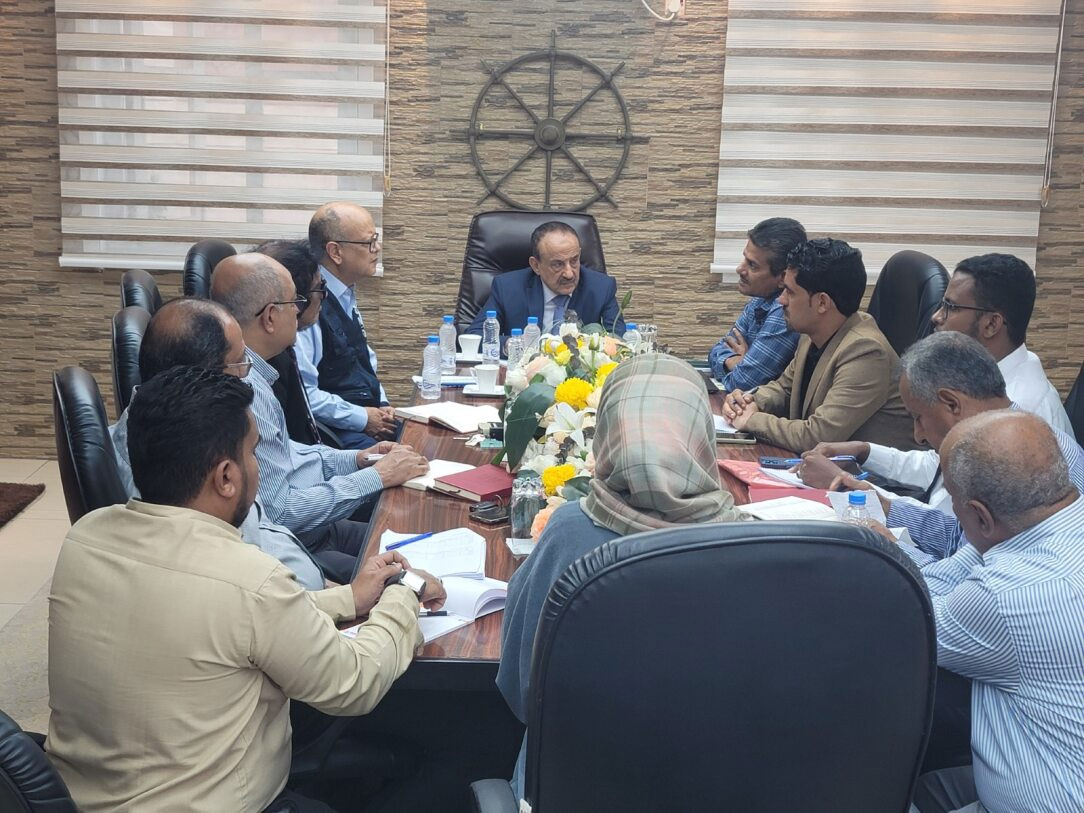 Multisectoral meeting at Aden Seaport, Yemen. Photo credit: WHO/WHO YemenThis WHO initiative to strengthen IHR core capacities at points of entry is crucial to enhance national, regional and global health security. Through unified efforts, Yemen is positioning itself at the forefront of health preparedness, showing its resilience and determination in the face of considerable challenges.
Multisectoral meeting at Aden Seaport, Yemen. Photo credit: WHO/WHO YemenThis WHO initiative to strengthen IHR core capacities at points of entry is crucial to enhance national, regional and global health security. Through unified efforts, Yemen is positioning itself at the forefront of health preparedness, showing its resilience and determination in the face of considerable challenges.
The success of this initiative hinges on the commitment of all involved parties. Collaboration is critical to prevent cross-border and international spread of disease and promote health security the world over.
The right to health: WHO works to bridge health divide in Yemen
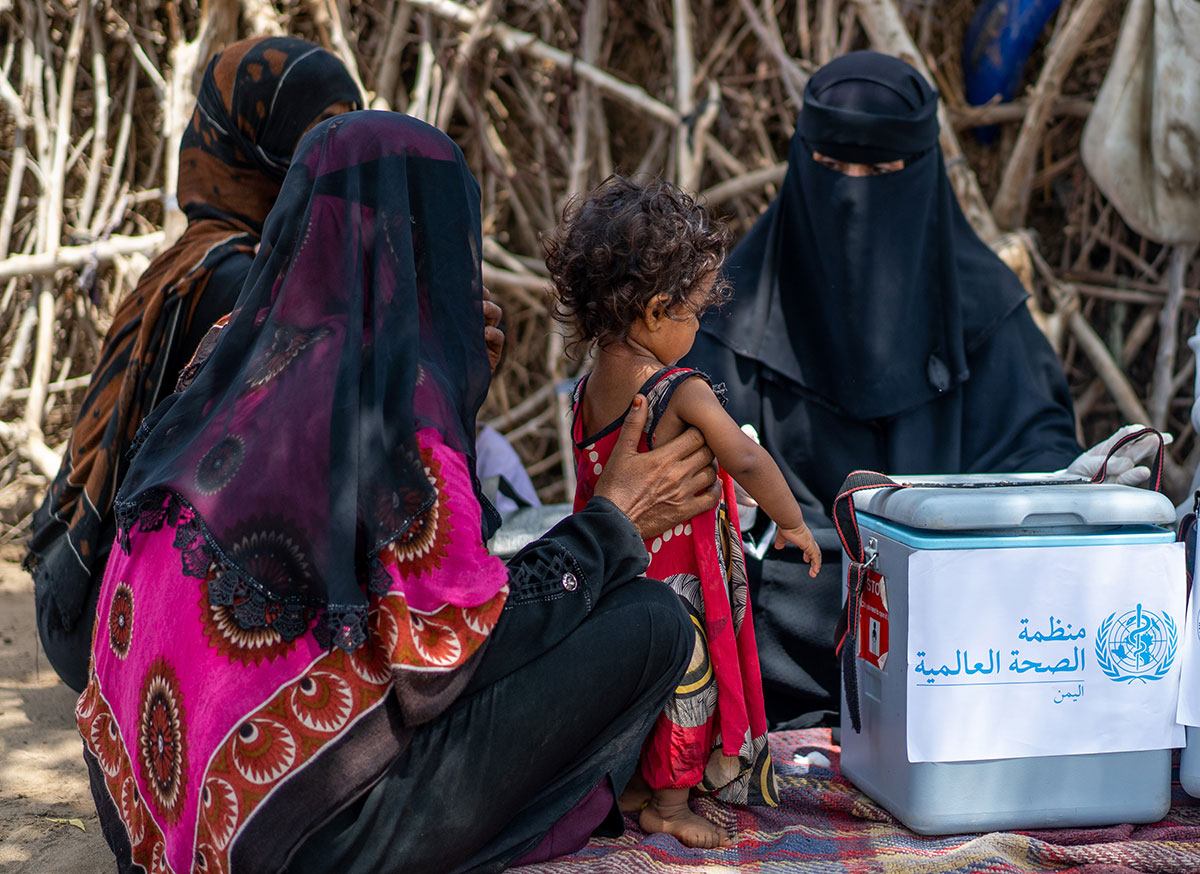 7 April 2024, Sana’a, Yemen – All people have the right to health. And no matter where they live, they should be able to access and afford quality health care when they need it. The prolonged conflict in Yemen has left half of the population in need of health aid .
7 April 2024, Sana’a, Yemen – All people have the right to health. And no matter where they live, they should be able to access and afford quality health care when they need it. The prolonged conflict in Yemen has left half of the population in need of health aid .
Vulnerable groups continue to bear the brunt of the crisis. Such groups include internally displaced people, children, women, elderly people, people with disabilities and mental health conditions, marginalized communities, and people affected by conflict-related injuries.
“The challenges that people in Yemen have to face cannot be described. Children who are referred to nutrition wards are only there because of prolonged starvation. The health system is fragile and faces difficulty in meeting the increasing demands,” said Dr Arturo Pesigan, WHO Representative in Yemen. “I feel for all the parents and caregivers who have to see their children getting ill in front of their eyes.”
Yemen faces a double burden of disease and armed conflict, and 17.8 million people in the country require health assistance. Of this number, 24% are women, who need access to diverse medical and reproductive health services. Children account for 50% of those in need, including 540 000 children aged under 5 years who require life-saving treatment for severe wasting – 10% of whom have severe acute malnutrition with medical complications and need highly specialized inpatient care. Inequalities are revealed in the high levels of malnutrition among mothers and children. Undernutrition remains a major public health crisis .
The multihazard risk profile for Yemen, the development of which WHO has supported, identifies 6 priority hazards with a high likelihood and potentially high public health impact: armed conflict, cholera, dengue, floods and cyclones, malaria and measles.
As the world marks the 76th World Health Day, WHO continues to support the health authorities to address the gaps, all the while working to strengthen the health system amid the conflict.
Through strong partnerships in 2023, WHO supported 245 health facilities to remain functional, providing 6.4 million outpatient consultations and reaching about 2.5 million people. Some 1.2 million children aged under 5 years were vaccinated against polio and another 1.1 million children (aged 6 months–4 years) were vaccinated against measles.
In addition, 4000 tonnes of medicines, equipment, medical furniture, information technology devices and other health technologies worth US$ 42.63 million in total were distributed to 470 health facilities across Yemen.
“Every number reflects a positive impact on people’s lives. These are men, women and children who were provided with life-saving services and were not turned away,” said Dr Pesigan. “A multisectoral approach is needed today to promote health and well-being while addressing determinants of health and risk factors. But if this is not combined with peace, true development may be difficult to achieve. Through peace, Yemen can start to heal.”
Media contacts
WHO Yemen Communications
Email:
About WHO
Since 1948, the World Health Organization (WHO) has been the United Nations agency dedicated to advancing health for all, so that everyone, everywhere can attain the highest level of health. WHO leads global efforts to expand universal health coverage, direct and coordinate the world’s responses to health emergencies and connect nations, partners and people to promote health, keep the world safe and serve the vulnerable.
Yemen launches a Pandemic Fund project to protect the most vulnerable communities from epidemic disease threats
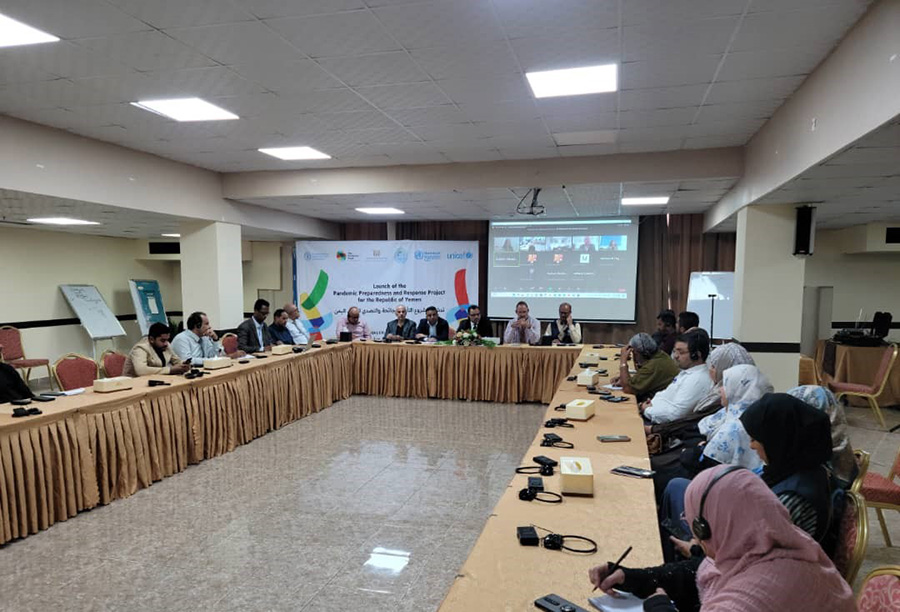 2 April 2024, Aden, Yemen – To better protect one of the most vulnerable populations in the world from pandemic threats, Yemen has today launched the Pandemic Preparedness and Response Project (PPRP).
2 April 2024, Aden, Yemen – To better protect one of the most vulnerable populations in the world from pandemic threats, Yemen has today launched the Pandemic Preparedness and Response Project (PPRP).
The virtual launch event was complemented by satellite in-person events in Aden, Republic of Yemen; Amman, Jordan; and Washington, D.C., United States of America. The event was attended by His Excellency Dr Qasem Buhaibeh, Minister of Public Health and Population; His Excellency Major General Salem Abdullah Al Soqatri, Minister of Agriculture, Irrigation and Fisheries; and Priya Basu, Executive Head of the Pandemic Fund Secretariat.
Also present were representatives of the PPRP implementing agencies: the World Health Organization (WHO), the United Nations Children’s Fund (UNICEF), the Food and Agriculture Organization of the United Nations (FAO) and the World Bank. Senior government officials, Health Cluster partners, and members of civil society and the public also joined the event.
The new PPRP will run for 3 years. Its goal is to protect and improve the health and well-being of Yemen’s people, livestock and ecosystems by strengthening the country’s ability to prevent, detect and rapidly respond to endemic and pandemic threats.
This goal will be achieved by pursuing the following 4 objectives:
Reinforce disease prevention, early warning, surveillance, detection and response capabilities through a One Health approach and at points of entry.
Improve health and veterinary laboratory capacities to confirm health threats and enhance biosafety and biosecurity.
Strengthen multisectoral workforce capacities from the community level up.
Enhance coordination, data sharing, communication and accountability among One Health stakeholders.
Delivery of these objectives will be supported by a US$ 26 million grant from the Pandemic Fund, and complementary action under other World Bank grants. These other grants include the Emergency Human Capital Project (2021–2024), implemented by UNICEF, WHO and UNOPS, with funding to date of US$ 448 million.
The Pandemic Fund grant also builds on the legacy of past successful investments that have strengthened outbreak preparedness and response, including the Yemen COVID-19 Response Project (2020–2022), implemented by WHO and the World Bank, and the Emergency Health and Nutrition Project (2017–2022), implemented by UNICEF and WHO with World Bank support.
Speaking at the launch, H.E. Dr Qasem Buhaibeh, Minister of Public Health and Population, reflected on Yemen’s commitment to improve pandemic preparedness and response: “Guided by WHO’s International Health Regulations, we are striving to raise our defences against persistent disease threats. This requires all-of-society action, and I hope everyone here today will join us in this effort.”
In recent years, building on lessons from the COVID-19 pandemic, Yemen has started to routinely deliver on the International Health Regulations (IHR) core capacities, such as IHR State Parties Self-Assessment Annual Report (SPAR). The country also conducted its first WHO joint external evaluation of IHR capacities in 2023 and is developing the first Yemen National Action Plan for Health Security, building on the findings and recommendations of these assessments.
H.E. Major General Salem Abdullah Al Soqatri, Minister of Agriculture, Irrigation and Fisheries, emphasized the importance of multisectoral collaboration: “We know a whole host of threats exist at the animal–human interface – using a One Health approach, with strong coordination at all levels, we can mitigate this risk and better protect ourselves and other countries.”
Dr Priya Basu, Executive Head of the Pandemic Fund, who joined virtually from the USA, said: "In partnership with the Government of Yemen, WHO, FAO, and UNICEF, the Pandemic Fund is proud to launch this innovative project aimed at fortifying Yemen against future major health threats. By enhancing digital surveillance capabilities and ensuring timely and effective response mechanisms are in place, alongside efforts to bolster laboratory systems and build a highly skilled health workforce, our project will significantly advance the country's pandemic preparedness and response capacities.”
WHO Representative to Yemen Dr Arturo Pesigan confirmed the need for broad-based action for pandemic preparedness and response, stating: “At WHO, we often say health systems strengthening is everybody’s business. I’d like to expand on this to say pandemic preparedness and response is everybody’s business.”
UNICEF Representative to Yemen Peter Hawkins stressed that "In a world still vulnerable to the impact of pandemics, our resilience will be measured by our ability to prepare diligently and respond swiftly. Every child must be protected from the threat of emerging diseases.”
PPRP is expected to make valuable contributions to Yemen’s preparedness and response capacities. Efforts will include, with WHO support, expanding and enhancing integrated disease surveillance and response. This will be done by leveraging and improving existing platforms such as the electronic Integrated Disease Early Warning System (eIDEWS) and rapid response teams positioned in each of the country’s 333 districts. The support will also help to sustain Yemen’s 12 central public health laboratories and enhance sample transportation systems.
FAO will support action to enhance surveillance for zoonotic diseases and agricultural laboratories and UNICEF will enhance community-based surveillance across the country. This work will be done in collaboration with WHO and the health authorities. At every step of the way, civil society will be engaged – to mobilize communities for pandemic action, and to ensure project accountability for the delivery of effective results.
The launch served as a crucial moment to showcase Yemen’s commitment to – and the support of local and international partners for – pandemic preparedness and response, and to mobilize broad action to protect communities from pandemic threats.
So far, the project has set up routine coordination meetings as well as a One Health coordination platform, bringing together the Ministry of Public Health and Population, the Ministry of Agriculture, Irrigation and Fisheries, WHO, FAO and other key stakeholders. PPRP focal points have been assigned at each implementing agency and the relevant ministries. Granular technical plans are under development, along with a civil society network for pandemic action.
A joint coordination committee, made up of representatives of government entities and partner organizations, is also being set up. This will regularly review progress, discuss challenges, and provide guidance on the project’s overall strategic direction.
About the Pandemic Fund
The Pandemic Fund – a multistakeholder partnership – was developed by the World Bank, in close collaboration with the World Health Organization (WHO) and other partners. It was established as a Financial Intermediary Fund at the World Bank in September 2022, launched in November 2022 at the G20 meetings in Bali, Indonesia, and has come together to deliver financing at record speed. The Fund is an innovative addition to the international health financing toolkit, a first-of-its-kind multilateral platform dedicated to making investments in pandemic prevention and preparedness in low- and middle-income countries. It has the flexibility to work through a variety of institutions, complementing efforts, drawing in co-financing, and promoting coordination on the ground; most importantly, it incentivizes countries to prioritize this agenda and increase their own efforts. The Fund’s operating model involves collaboration with governments, WHO, other United Nations agencies, multilateral development banks, global health initiatives, the private sector, philanthropic institutions, and civil society.
Children of Yemen caught up in agony of displacement and malnutrition
 1 April 2024 – A couple of years back, a house full of life and warmth dissolved into ruins amid the conflict that was ongoing in Al Hudaydah governorate. With a heavy heart, Maisa describes the loss of her home to war: “I was once above the sky to finally have a home of my own with my little family, and now what we once had as our home turned into rubble, ripping away all the joy I once had.”
1 April 2024 – A couple of years back, a house full of life and warmth dissolved into ruins amid the conflict that was ongoing in Al Hudaydah governorate. With a heavy heart, Maisa describes the loss of her home to war: “I was once above the sky to finally have a home of my own with my little family, and now what we once had as our home turned into rubble, ripping away all the joy I once had.”
The ongoing conflict in Yemen has inflicted devastating impacts on its people, especially children. The bombs stole not only Maisa’s roof, but also the joy of her family and the memories held in every corner of the house.
Two years have passed since Maisa and her family had to flee to Marib from the clutches of the war in Al Hudaydah. Now Maisa lives with her husband and 2 children, along with her husband’s 3 sisters and their parents, in a camp for internally displaced people in Marib city. The family members are split between 2 tents and share a single bathroom. Living conditions are cramped in the overcrowded camp.
Since Maisa’s family moved to Marib, her husband struggles to find consistent daily work and secure basic necessities. The conflict has crippled the country’s economy as well as its health system, and the family constantly worry about how they will afford their next meal. The deteriorating economic situation, a direct result of the conflict, has made food insecurity worse, causing millions to face the threat of starvation. As a result, levels of undernutrition, among children especially, are rising, leaving millions vulnerable to malnutrition and illness.
“My husband works for daily wages,” Maisa explains, “but there’s no guarantee of work every day. The constant worry about our next meal is a heavy burden.”
The conflict has unleashed immense suffering on the people of Yemen. Displacement adds yet more agony to families like Maisa’s who must endure extreme poverty, malnutrition and illness, coupled with the harsh conditions of living in a camp. Maisa’s 8-month-old son, Hassan, exemplifies this struggle.
Hassan was diagnosed with severe acute malnutrition after being referred to the WHO-supported therapeutic feeding centre (TFC) at Al Shahid Mohammed Hael Hospital, Marib. He struggles to sleep or breastfeed properly. This is not Hassan’s first battle with malnutrition; conditions in the camp have caused him to relapse.
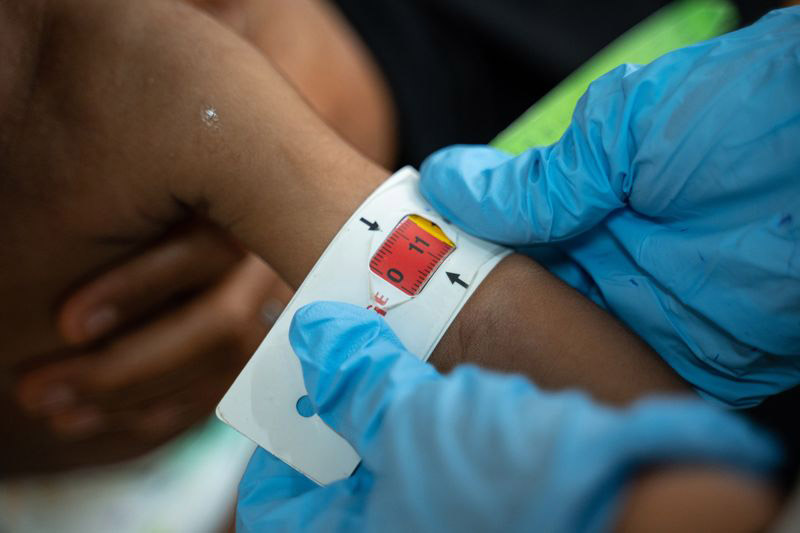 “My child has been frail from the moment he was born, and now his condition is improving, I just wish I could maintain the health of my child,” says Maisa. “I live in constant fear [of] losing him to malnutrition and disease.”
“My child has been frail from the moment he was born, and now his condition is improving, I just wish I could maintain the health of my child,” says Maisa. “I live in constant fear [of] losing him to malnutrition and disease.”
WHO, along with the Central Emergency Response Fund, plays a critical role in supporting 23 TFCs across Yemen, providing essential medical supplies, laboratory supplies and water, sanitation and hygiene supplies, and covering oxygen refilling costs. WHO also supports nearly 395 health workers with performance-based payments to maintain life-saving health and nutrition services. The health workers have gone beyond the provision of life-saving services provision to apply preventive measures too, in the form of both infant and young child feeding counselling, and mental health and psychosocial support.
These 23 TFCs provide all their services free of charge, while consistently meeting the quality standard of life-saving health and nutrition services. This ensures access to life-saving treatment for thousands of children like Hassan. With the WHO support, the centres have so far treated about 8774 severely malnourished children aged under 5 years. Nearly 97% of these children have recovered and been referred to the outpatient therapeutic feeding programme for follow-up.
“I could have lost him if it wasn’t for the free-of-charge treatment here ¬– for that, I’m very grateful for WHO for saving my child,” says Maisa, of Hassan. “I wish that my children remain healthy and have regular meals. Every mother wishes to be able to save her children from agony and turn their suffering into happiness.”
*Note: The beneficiary is in a hard-to-reach location, and was only accessible via phone. The images used are expressive and are not related to the person or location mentioned.


